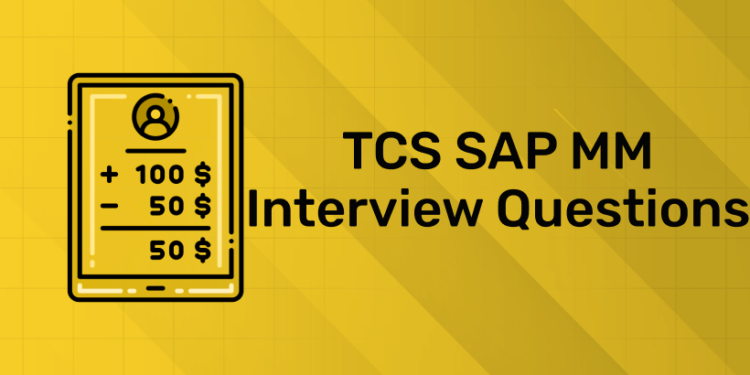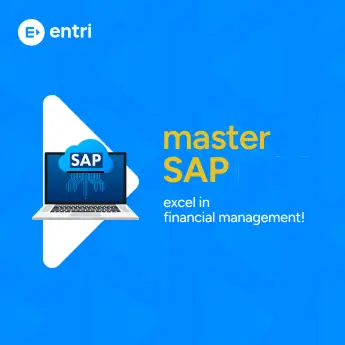Table of Contents
SAP MM (Materials Management) is a core module that handles the purchasing and inventory functions of an organization. It helps manage the entire supply chain process, including inventory management, purchasing, material handling and vendor management.
If you are preparing for TCS interview for SAP MM, it is essential to have a clear understanding of the module and processes involved in SAP MM. In this blog, you will discover the top 50 SAP MM interview questions that you should be prepared for.
These questions cover various aspects of SAP MM. Preparing for these questions will help you showcase your skills and knowledge and increase your chances of getting a TCS job as a SAP MM.
Take Your Career to New Heights with Our Professional SAP MM Course! Get free Demo Here!
TCS SAP MM Interview Questions
Are you a job seeker looking for TCS SAP MM interview questions and answers to prepare for the interview or just looking for information to expand your knowledge? Whatever the reason, you’ve landed in the right place.
Yes, in the complex world of ERP, finding a career in purchasing, logistics or inventory management requires knowledge of the SAP Material Management (MM) module. We are here to help you with a complete list of TCS SAP MM interview questions that are commonly asked in the interview.
This blog prepares you to crack the interview by providing insider answers to TCS SAP MM interview questions. Let’s start your journey to becoming a SAP MM specialist today!
1. Define SAP MM?
SAP MM, which stands for SAP Material Management, is a software module within SAP software. The main function of SAP MM is the management of company materials. The functionality includes many tasks, from purchasing and inventory management to material storage and valuation.
2. How can SAP MM benefit businesses?
The main advantages of the SAP MM module are as follows:
- Simplifies purchasing processes: From purchase requisitions to orders or communication in between, everything is controlled and managed with SAP MM.
- Optimizes inventory levels: The real-time data tracking feature in SAP MM reduces the problem of inventory and overstocking
- Improves Cost Control: Get real-time material cost information.
- Improves visibility and insights: The software allows you to track material movement, inventory levels and supplier performance simultaneously. This improves transparency and the reporting system.
3. What core data sets (master files) are essential for running SAP MM?
- Material Master: This will give you complete information on every material. The information consists of descriptions, classifications, and pricing for every material.
- Vendor Master: Contains information on store suppliers, their contact details, payment terms, and purchasing conditions.
- Purchasing Info Record: The purchase info record combines the most used material and vendor masters for faster purchase order creation.
4. Which components are essential for the effective operation of SAP Material Management?
These core files are key, but other necessary components include functions for:
- Creation of purchase requisitions and orders.
- Manage goods receipt and inventory levels.
- Invoice processing and supplier payment management.
- Generating reports on material consumption and costs.
.5. Explain the terms goods receipt and post-goods receipt.
- Goods Receipt: This process involves recording the physical goods received and final verification of the ordered goods against the purchase order.
- Post-Good Receipt: The final step in the goods receipt process is to update the inventory record and accounting records.
6. How does SAP MM categorize different types of inventory (stock) within a company?
Systems Applications and Products in Data Processing MM consists of different share categories listed below:
- Project Stock: This option will determine the materials that are dedicated to specific projects.
- Returnable packaging: Reusable packaging is tracked within the system.
- Consignment Stock: Materials owned by the seller but held at the customer’s place are referred to as consignment stock.
7. Can you explain the concept of consignment stock in SAP MM
This inventory type in the SAP MM module allows customers to use supplier materials without officially purchasing them. The seller has the authority to take back ownership of inventory and replenish it as needed based on consumption.
8. Is a purchase requisition an internal document used within the company or an external document sent to vendors?
The purchase request falls under the internal document type category. The document is generated within the department that requests the purchasing team to purchase specific materials.
9. Explain the different info record types in SAP MM.
There are two types of information records:
- Fixed Information Record: The data of most used purchased materials from one supplier is stored in a fixed information record.
- Sourcing List Information Record: Similar to Fixed, but limits purchases to vendors on a pre-approved sourcing list.
10. What special stocks does SAP MM offer?
You have already read about the consignment warehouse, in addition two more warehouses are available in Systems Applications and Products in Data Processing MM:
- Pipeline Stock: Those materials that have not reached their desired location or are otherwise moving between locations (for example, during the transportation of goods).
- Blocked Stock: Materials that are not usable due to quality issues or other limitations are considered blocked stock.
11. What assignment types are typical in SAP Material Management?
The two common types of assignments in the SAP material management system are
- MRP Type: Helps in planning the strategy for the material (for example, MRP, change order point).
- Special warehouse type: Assigns the material to a specific special warehouse category (e.g. shipment, project).
12. What key fields are in the purchasing view of SAP MM?
The Purchasing view in SAP Materials Management contains important information for purchasing such as:
- Order Unit: The total number of materials ordered. Quantity can be per box, dozen or pieces.
- Minimum Order Quantity: The minimum order amount that is required in one order.
- Source List: Checks if there is any pre-approved supplier list for this material.
- Information Record: Links to the relevant purchasing information record for the material.
13. Why is the batch record significant in SAP MM?
Batch records play a vital role in tracking the specific properties and expiry dates of a batch of material. Both of these pieces of information are important for:
- Quality Control: This feature will track the materials from the starting point. In case any problem occurs, the system can identify the defective batch and recall those particular ones.
- Price: Because materials from different batches may vary in quality. This depends on the situation when they were made (like newer batches vs. older ones). This system assigns different costs based on these specific characteristics.
14. How do you connect a document to a vendor master record?
Yes, it is possible to link documents (such as purchase orders) to a vendor master record. During document creation, you can select and enter a unique vendor identification number and your document will be linked. This creates a connection between the purchase and the supplier.
15. Which transaction code removes a batch in SAP MM?
If it is too necessary, delete the batch only in SAP MM, otherwise it is not recommended. Enter transaction code MB1A to delete batch. You can choose alternative options such as batch blocking if deletion is not necessary.
16. How do you authorize a purchase order release? Which Transaction Code shows and resets the purchase order release?
The order is released before it is sent to the seller. Purchase requires internal approval. There are two options for releasing a purchase order
- First, you can release directly from the document.
- Second, use transaction code ME21N.
If you want to check and view the release status of a purchase order or reset a previous release, use transaction code ME22N. This option gives you the ability to make adjustments before sending the order to the supplier.
17. Which transaction code extends the material view in SAP MM?
The transaction code to extend the material view in SAP MM depends on these two situations
If you are creating a new material record, then use code MM01. This option allows you to assign different values such as buy or sell.
In the second case, if you already have a material record and want to modify something, use transaction code MM02.
18. What does Source List mean to you? Which transaction code is utilized for Source List creation
A source list is defined as a pre-approved list of suppliers eligible to supply specific materials. This list will create limited material supply options for the supplier and make the process easier. You can create a source list using transaction code ME01.
19. In SAP MM, what is the abbreviation ERS?
ERS stands for External Representation Source. ERS gives you the option to integrate an external source of supply (e.g. an online store) into material within SAP MM. This allows for easy integration of external purchasing capabilities with your internal material management system.
20. What conditions must be met to create a purchasing info record in SAP MM?
Two data are needed to create a purchase information record in SAP MM:
Valid material sample: This record contains information about the material, such as its description, quantity and classification.
Supplier Master Record: Supplier master data stores information about suppliers, their contact details, payments, policies and details of pre-negotiated pricing agreements.
21. How do you mark material for deletion in SAP MM?
In SAP MM, you can use the delete flag to mark any specific data as inactive for future use. This process can be done through the material master record by entering transaction code MM06.
Data marked under the marked category cannot be used for new transactions, but is accessible for historical data viewing.
22. How do you modify the standard price of the SAP master material?
In the SAP material master system, the standard price represents the average price paid for the material.
To update the price, proceed as follows: Logistics > Valuation > Valuation Pricing Path within SAP. This allows you to view changes in market prices or negotiations with suppliers.
23. What does purchase requisition mean to you?
An internal document generated by a department within a company with a material request is called a purchase requisition. After the document is generated, it is sent to the purchasing team to start the purchasing process.
24. What does RFQ stand for in SAP MM? What’s its purpose?
RFQ stands for Request for Quotation. This document is created and sent to potential vendors requesting quotes for the specific materials required. This data helps to compare prices and terms from different sellers and choose the best one for the order.
25. What do production and purchase orders mean to you?
Production order: An order is an internal document indicating the own production of a product. The details given in the documents are the materials, quantities and procedures required for production.
Purchase Order: An external document used to purchase materials from external suppliers. The document lists specific materials, quantities, prices and delivery terms agreed with the supplier.
26. What is the purpose of the Purchase Info Record?
A purchase information record is a combination of material master data and supplier master data. This record stores all necessary data such as standard price, order unit and preferred supplier for a particular material. This document reduces the task of re-entering all the mentioned information every time an order is created.
27. How can you create a vendor account group in SAP MM?
We can create vendor account groups using transaction code XK01. A vendor account group keeps all vendors with similar characteristics in one place. This simplifies the vendor management process. For example, we created a group for all stationery suppliers.
28. In SAP MM, what are the various procurement types for creating purchase requisitions?
According to the purchase need, you can classify the purchase request:
- External Procurement: Purchases from external suppliers.
- Consignment Warehouse: A requirement for a supplier to replenish materials at a consignment warehouse location.
- Internal Purchasing: Helps move materials between internal storage locations within the company.
29. What does master data mean to you?
Master data acts as the foundation of SAP modules. This specific data remains constant throughout the procurement process. In SAP MM, master data, vendor master data, and purchase information record serve as master data.
30. What does consumption-based planning (CBP) mean to you?
CBP stands for Consumption Based Planning. It is a planning strategy that depends on historical data on actual material consumption. Using data from past usage patterns, it predicts future material requirements.
31. Define the term material requirement planning (MRP).
MRP works as a planning methodology to calculate material requirements for production schedules. This focuses mainly on the bill of materials (BOM), master production plan (MPS) and current inventory status.
32. How do MRP and CBP differ?
- MRP: Proactive, uses forecasting and MPS to anticipate needs.
- CBP: Reactive, adjusts plans based on actual past consumption data.
33. What does a transaction code signify in SAP MM?
A transaction code is a SAP-specific shortcut that allows users to jump directly to a specific function or process in the system. For example, ME21 is the transaction code for creating a purchase order in SAP MM.
34. What does the term ” material ledger” signify in SAP MM?
The material ledger helps track all financial transactions for a particular material. It provides additional information such as:
- Material costs over time, taking into account factors such as purchases, consumption and revaluation.
- Share profitability insights for specific materials.
- Variance analysis to identify cost deviations from planned budgets.
35. How can a vendor return be handled without referencing a purchase order?
In several cases, SAP MM allows returns to be processed without reference to a purchase order. Damaged goods received outside of the formal order process are mostly considered. Use transaction code ME21 (Create Purchase Order) with the specific reverse movement type to document the return.
36. What does the term Master Production Schedule (MPS) mean in SAP MM?
MPS defines the production planning of the finished products that the company wants to produce in a certain period. This plays a major role in material requirements planning (MRP) in SAP MM.
37. What is the purpose of the Confirmation Control Key (CCK)?
CCK determines when and how production confirmations are created within SAP MM. This helps manage how workers report after production is complete by showing inventory updates and costing.
38. What does the term “Batch Information Cockpit” mean in SAP MM?
It is a centralized information center providing comprehensive data on material batches. Allows users to:
- Analyze properties, expiration dates, and locations.
- Track batch lifecycles and initiate quality checks.
- Manage tasks and prioritize specific batches for use.
39. What is the Lot Size in SAP MM?
The lot size determines how much material is produced or purchased in one order. Lot size affects factors such as:
- Inventory levels: If the lot size is smaller, then the storage requirements are also smaller, but the order frequency is higher.
- Manufacturing efficiency: Larger lot sizes can reduce lead time but tie up capital in inventory.
40. What purpose does ‘Split Valuation’ serve in SAP MM?
In SAP MM, split valuation can be used to assign different price valuations for different purposes. This can be useful for:
- Accounting vs. Taxes: The main advantage of split valuation is that it allows you to keep separate valuations for accounting and tax purposes.
- Standard vs. Moving Average Price: Helps track the standard price along with the actual average cost of materials purchased.
41. What accounts are established in SAP MM? Why is assigning these accounts important?
Below are the three different accounts created in SAP MM:
- Material accounts: Material accounts represent the value of materials in inventory.
- Expense Accounts: Allows you to track costs associated with material purchases.
- Sales Accounts: This account stores the sales received after the sale of finished products.
All these accounts are important for monitoring the financial health of the company and for cost analysis.
42. How can you view the complete list of reservations in the system?
Using the transaction code MB25, you can view a complete list of all reservations in the system. A “reserve” reservation for a certain amount of material allows you to store the product for use for a specific purpose (for example, production orders or sales orders). This prevents the material from being used elsewhere.
Take Your Career to New Heights with Our Professional SAP MM Course! Get free Demo Here!
43. What types of ERPs exist?
There are many ERP vendors besides SAP, and each vendor has its own strengths and features. A few common examples include:
- Oracle NetSuite
- Microsoft Dynamics 365
- Infor CloudSuite Industrial
- IFS
The key to exciting career opportunities in SAP may lie in… SAP MM Interview Questions! Here’s why:
- Industry Standard: By knowing the latest SAP MM interview questions and answers, you can answer the industry related questions the interviewer might ask.
- Confidence Booster: Practicing SAP MM interview questions boosts your confidence with the latest knowledge and industry trends. This helps you to answer confidently, making a strong first impression.
- Preparation Advantage: Having a good knowledge of potential SAP MM interview questions will allow you to respond quickly and highlight your strengths and relevant skills.
44. What does “External Procurement” mean?
When a company does not produce any materials itself and buys them from any external vendors, it is called external procurement. SAP MM enables the management of the complete lifecycle of an external purchase, starting with the creation of purchase requisitions and ending with the receipt and management of supplier invoices.
45. How is pricing calculated in MM?
There are different methods that SAP MM deploys to calculate material prices:
Standard Price: A pre-defined average price for a material that will be updated from time to time.
Moving Average Price: The average cost of all materials purchased to date, automatically updated with each new purchase.
FIFO (First-In, First-Out): Inventory values assuming that the first materials purchased are used first, which affects costing.
46. What does the “subcontracting cycle” refer to in SAP MM?
A feature in SAP MM that allows companies to outsource any specific manufacturing steps from external subcontractors. SAP MM allows you to manage the overall process, which includes sending materials to subcontractors, receiving finished components, and accounting for payments.
47. What are Cost Centers?
Cost centers are those functions or departments within a company that are not directly related to revenue generation but manage costs. This includes, for example, HR, marketing and IT. Their primary role is to keep costs under control and in line with budgets.
48. Explain MIRO in short.
MIRO stands for Materials Management: Invoice Receipt. MIRO is used in SAP MM for checking and verifying invoices that vendors have generated for purchased materials. This involves verifying invoice details against purchase orders and goods receipts before creating a payable to the supplier.
49. Can a purchase requisition be modified after it’s been submitted for approval?
Yes, you can make changes after creating a purchase requisition, but with limitations. A few minor changes or modifications are allowed. However, making major changes requires creating a new requisition to ensure the process followed is correct and approved by the authority.
50. What information is typically included in a source list within SAP MM?
Source lists are generated using transaction code ME01 in SAP MM. This feature defines a set of pre-approved groups of suppliers who are eligible to supply specific materials. This process simplifies the purchasing process by offering limited options for reliable suppliers.
51. What are the different levels of invoice verification available in SAP MM?
There are several invoice validation methods in SAP MM:
- Two-Way Match: Verifies that the invoice matches the corresponding purchase order and goods receipt.
- Three-Way Match: This requires a physical verification method to ensure that the materials received match the purchase order and invoice details.
- Four-Way Match: This process uses a price verification step that mainly compares the invoiced price with pre-negotiated terms or contracts.
Conclusion
By understanding the concept of each SAP MM interview question, you will be able to clear the interview easily. We have tried to cover every important SAP MM interview question that the interviewer is most likely to ask.
Read TCS SAP MM Interview Questions and Answers thoroughly and clear your basic doubts regarding SAP MM.
Entri has the credibility to enhance your knowledge and pave the way for a successful career in enterprise SAP MM. We will not only provide you with theoretical and practical exercises, but also prepare you to become an effective SAP MM professional.
Master SAP with Expert-Led Courses
Unlock your potential with our comprehensive SAP courses! Learn essential modules like SAP MM (Materials Management), SAP SD (Sales and Distribution), and SAP FICO (Financial Accounting and Controlling) from industry experts.
Know More











